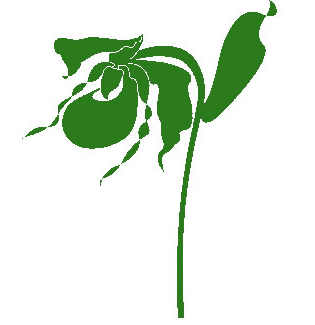
Illustrated Flora of East Texas
Online Brochure

|
Illustrated Flora of East Texas Online Brochure |
|
A hard copy version of this brochure is available from BRIT
The Botanical Research Institute of Texas (BRIT) and Austin College are collaborating on the Illustrated
Flora of East Texas project. Volume 1 (introduction, ferns, gymnosperms, monocots) is now available. This team-oriented project, will result in a comprehensive, fully illustrated, easy-to-use guide to the plants that occur in the 87 county area that defines East
Texas. The region covered extends from the state's eastern border westward to include Dallas and Waco, and southwestward to include Austin and portions of Bexar County north of San Antonio. All plants known from the Pineywoods, the Post Oak Savannah and the Blackland Prairies will be covered. Because of the diverse ecosystems and extreme biological richness, the area has sometimes been called the biological crossroads of North America and includes such magnificent areas as Caddo Lake in the northeast and the Big Thicket in the southeast. Due to this richness the Illustrated Flora will require three volumes. The first volume, which covers the monocots (lilies, orchids, irises, grasses, etc.), ferns, and gymnosperms (pines, bald cypress), was published in May 2006. Each of its approximately 1,060 species is illustrated with a line drawing, and there are color photographs of nearly 200 of the more showy species. The second and third volumes will follow at a later date and cover nearly 2,350 species of dicots (oaks, pecans, beeches, daisies, beans, mints, roses, etc.).
The team is cooperating with botanists, agronomists and foresters throughout East Texas to make the flora as useful as possible to farmers, landscapers, gardeners, nurserymen, hobbyists, builders, and others—everyone who deals with wild and cultivated plants! Information about poisonous and useful plants, weedy species, presettlement conditions, habitats, geology, soils, and climate will also make this a reference for use in schools, for a variety of subjects from history to botany. While the general public will find the format very user friendly, the book will also be the definitive work on the plants of the region, and can be used as a textbook for college courses as well. Cooperating with local institutions throughout the region, the team hopes this work will give everyone a deeper understanding of the rich natural heritage of East Texas.
The team has already produced a similar book, the Illustrated Flora of North Central Texas, now in its second printing, which has been very useful. It is our goal to make the Illustrated Flora of East Texas even more useful to East Texans.
Institutions
The Botanical Research Institute of Texas, BRIT, is located in Fort Worth. It is a nonprofit, education and research organization dedicated to the conservation of our natural heritage for future generations. With a collection of nearly 1,000,000 dried plant specimens, BRIT has the largest independent herbarium in the Southwest. Its botanical library houses more than 75,000 volumes of books and journals.
Austin College, located in Sherman, Texas is a small (1,200 students), private, residential college dedicated to educating undergraduate students in the liberal arts and sciences. It is collaborating on the East Texas flora project through its Center for Environmental Studies, which promotes multidisciplinary inquiry of environmental issues and problems through education, research, and outreach programs.
Individuals
George M. Diggs, professor of biology at Austin College, is also a research associate at BRIT. George has interests in Texas flora, floristics of the New World tropics, and the taxonomy of the Ericaceae (Blueberry Family). In 1999, he was selected Texas Professor of the Year by the Carnegie Foundation and the Council for Advancement and Support of Education.
Barney L. Lipscomb began his botany career at S.M.U. as herbarium botanist. He is currently an assistant director of BRIT, editor and head of press, head of the library, and holds the Leonhardt Chair of Texas Botany. Barney, along with others, was instrumental in establishing BRIT as the permanent conservator of the collections from S.M.U.
Monique Dubrule Reed is the Biology Department Herbarium Botanist at Texas A&M and coordinates undergraduate and graduate courses in Plant Taxonomy. Besides recently authoring a comprehensive manual of the dicot flora of Brazos and surrounding counties, Monique has many interests. Along with her obvious interest in the Texas flora, she is interested in the use of native plants in landscaping, botanical illustration, development of instructional materials for botany, and needlework. Additionally, she has projects on the World Wide Web in connection with the TAMU herbarium and plant systematics courseware.
Robert J. O'Kennon is a senior captain with American Airlines. However, in his spare time, he is a self-trained botanist and nature photographer extraordinaire. He has discovered or described more than 20 species and authored numerous scientific papers. Additionally, he serves on the board at BRIT. He, along with Barney and George, is an author of the Illustrated Flora of North Central Texas.
Last, but not least, one cannot think about East Texas botany without thinking of Dr. Elray S. Nixon. He has authored numerous books and papers on the flora and ecology of East Texas. He is professor emeritus of Stephen F. Austin State University, and has, over the years, influenced numerous students and contributed immeasurably to our knowledge of the East Texas flora. It is for these reasons that the Illustrated Flora of East Texas will be dedicated to him.
©2004 Botanical Research Institute of Texas.
509 Pecan Street
Fort Worth, TX 76102-4060, USA
Tel.:1-817-332-4441 Fax: 1-817-332-4112 E-Mail: rgeorge@brit.org
For WWW related inquiries, please mail to wweatherby@austincollege.edu
Copyright (c) 1995 - 2004 The Botanical Research Institute of
Texas, Inc. No part of these
documents may be reproduced, stored in a retrieval system, or
transmitted in any form or by
any means--electronic, mechanical, photocopying, recording or
otherwise--without the written
permission of the copyright owner. All rights reserved.